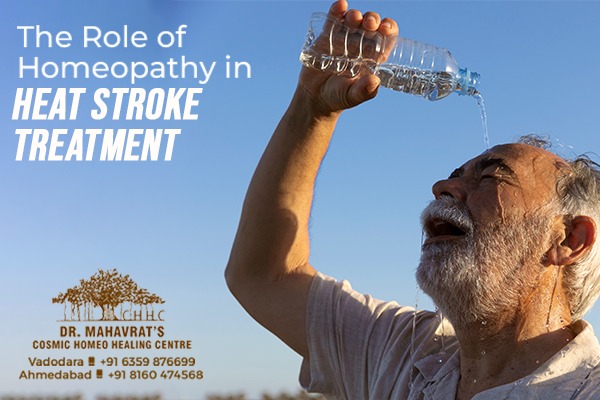Summer’s here, and with it comes the joy of vacations, barbecues, and spending time outdoors. But amidst the fun lurks a danger – heatstroke. This life-threatening condition occurs when your body overheats and can no longer cool itself down. While anyone can experience heatstroke, it’s especially risky for young children, at the same time older adults, and those with chronic health issues.
Knowing how to respond to heatstroke is crucial. In this blog, we’ll discuss the treatment options and some preventive measures to keep you and your loved ones safe this summer.
Recognizing the Signs
The first step is recognizing the signs of heatstroke. Here’s what to watch out for:
- High body temperature: This is the most crucial symptom. A core body temperature exceeding 104°F (40°C) is a red flag.
- Confusion: Disorientation, slurred speech, or sudden changes in behavior can indicate heatstroke.
- Headache, nausea, and vomiting are common symptoms.
- Rapid, shallow breathing: Pay attention to your breathing patterns.
- Seizures: In severe cases, heatstroke can lead to seizures.
- Moist or clammy skin: While sweating is a natural cooling mechanism, excessive sweating followed by dry, hot skin can be a sign of heat stroke progression.
- Loss of consciousness: It is an emergency, therefore seek for help.
Immediate Action is Key
If you suspect someone is going through heatstroke, call your local emergency number immediately. Don’t wait for symptoms to worsen. While waiting for help, here are some first-aid steps you can take:
- Move the person to a cool, shaded area: Get them out of direct sunlight.
- Loosen or remove clothing: This helps heat escape the body.
- Cool the person down:
○ Apply ice packs or you can use cool, wet cloths to the groin, neck, and armpits.
○ If possible, immerse the person in a cool bath or shower.
○ Fan the person while misting with cool water (not ice water).
- Offer fluids: If the person is conscious, give them cool water or a sports drink to rehydrate.
What to Expect at the Hospital
At the hospital, medical professionals will focus on rapidly lowering the body temperature. This may involve:
- Intravenous (IV) fluids: To rehydrate and replenish electrolytes.
- Cooling techniques: These might include ice baths, evaporative cooling methods, or cooling blankets.
- Medications: In some cases, medications to control seizures or manage other complications might be needed.
Prevention is Always Better
Here’s how to stay safe and avoid heatstroke:
- Stay hydrated: You must drink plenty of fluids, even before you feel thirsty.
- Limit strenuous activity during peak heat hours: Opt for early morning or evening workouts.
- Wear loose, lightweight, and light-colored clothing.
- Take breaks in air-conditioning: Especially important for prolonged outdoor exposure.
- Never leave children or pets unattended in a hot car.
- Be aware of medications: Some medications can increase your risk of heatstroke. Consult your doctor if you have any concerns.
By recognizing the signs, taking quick action, and practicing preventive measures, you can stay safe and enjoy the summer to the fullest. Remember, if you suspect heatstroke, calling emergency services is the top priority.
The Role of Homeopathy Treatment for Heat Stroke
CHHC can be a valuable resource for complementary healthcare after a heatstroke episode. Homeopathy focuses on stimulating the body’s natural healing processes. A qualified homeopathic doctor can recommend remedies to address specific lingering effects of heatstroke, such as fatigue, headaches, or dizziness.
A few Homeopathic remedies that help you in heat strokes are :
Gelsemium:
It covers drowsiness, headache, weakness, and comatose states mostly after sun exposure. Gelsemium is indicated for Sunstroke when the patient feels dull and drowsy. In such cases, there is weakness along with trembling. The patient may feel dizzy and confused. Gelsemium works well when there is vertigo with a blurring of vision. Vertigo with the heaviness of the head, band-like feeling around mostly an occipital headache. In most cases, the patient may feel better on lying down.
Belladonna:
This remedy is effective against sudden shooting headaches along with a red face and dry mouth. Belladonna- is a good remedy for sunstroke with congestion of the face & head. The patient requiring medicine Belladonna will experience a burning sensation on the face, a severe congestive headache, and redness in the eyes. The patient may faint due to weakness. The skin feels hot, red, and dry, and the complaints may aggravate with the least movement.
Glonoinum is the most indicated remedy where the patient has a severe, sudden headache with a throbbing sensation. The patient complains of heaviness in the head, and a feeling that the head is about to burst. In most cases, the pain in the head may get better after sleeping.
Camphora:
Camphora is commonly used for conditions associated with collapse, fainting and shock. It is also employed for ailments related to extreme coldness, such as chills, cramps and spasms. Camphora can be beneficial for symptoms characterized by icy coldness, trembling and a feeling of being “at death’s door.” This remedy can be helpful for a rash that comes from sun exposure and is also used in sunstroke. There is a feeling of general coldness and sensitivity, despite which the person does not want to be covered.

